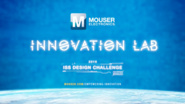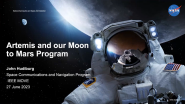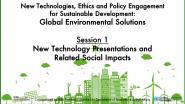528 resources related to
International Space Station
Read more
Featured Article
Read more
Related topics
No topics related to "International Space Station"
Top Conferences on International Space Station
2025 24th IEEE Intersociety Conference on Thermal and Thermomechanical Phenomena in Electronic Systems (ITherm)
2022 10th Workshop on Satellite Navigation Technology (NAVITEC)
2022 IEEE International Conference on Power and Energy (PECon)
2022 IEEE International Ultrasonics Symposium (IUS)
2022 American Control Conference (ACC)
2021 IEEE/AIAA 40th Digital Avionics Systems Conference (DASC)
2021 IEEE 48th Photovoltaic Specialists Conference (PVSC)
2021 IEEE International Conference on Plasma Science (ICOPS)
2020 IEEE International Conference on Robotics and Automation (ICRA)
2020 IEEE/ASME International Conference on Advanced Intelligent Mechatronics (AIM)
2019 IEEE International Symposium on Information Theory (ISIT)
2019 IEEE 15th International Conference on Automation Science and Engineering (CASE)
2019 Joint Conference of the IEEE International Frequency Control Symposium anEuropean Frequency and Time Forum (EFTF/IFC)
2018 IEEE International Conference on Consumer Electronics (ICCE)
2018 IEEE 29th Annual International Symposium on Personal, Indoor and Mobile Radio Communications (PIMRC)
2018 IEEE International Telecommunications Energy Conference (INTELEC)
2018 IEEE International Conference on Multimedia and Expo (ICME)
2017 IEEE 13th International Symposium on Autonomous Decentralized System (ISADS)
2017 15th International Conference on ITS Telecommunications (ITST)
2017 IEEE International Conference on Robotics and Biomimetics (ROBIO)
2017 IEEE International Symposium on Safety, Security and Rescue Robotics (SSRR)
2017 IEEE 7th International Workshop on Computational Advances in Multi-Sensor Adaptive Processing (CAMSAP)
2016 IEEE Conference on Control Applications (CCA)
2016 International Conference on Advanced Communication Control and Computing Technologies (ICACCCT)
2016 11th International Symposium on Antennas, Propagation and EM Theory (ISAPE)
2015 25th International Crimean Conference "Microwave and Telecommunication Technology" (CriMiCo)
2015 10th International Conference on Communications and Networking in China (ChinaCom)
2013 9th International Conference on Wireless Communications, Networking and Mobile Computing (WiCOM)
2013 IEEE International Workshop on Genomic Signal Processing and Statistics (GENSIPS)
2012 International Conference on Selected Topics in Mobile & Wireless Networking (iCOST)
2012 2nd International Conference on Electronic & Mechanical Engineering and Information Technology (EMEIT)
2012 3rd International Conference on E-Business and E-Government (ICEE)
2012 International Conference on Green and Ubiquitous Technology (GUT)
2012 Second International Conference on Electric Information and Control Engineering (ICEICE)
2011 ICO International Conference on Information Photonics (IP)
2010 3rd International Symposium on Systems and Control in Aeronautics and Astronautics (ISSCAA)
2010 ISECS International Colloquium on Computing, Communication, Control, and Management (CCCM 2010)
2009 IEEE International Symposium on Computational Intelligence in Robotics and Automation - (CIRA 2009)
2009 IEEE International Conference on Portable Information Devices (PORTABLE)
2009 International Conference on Control, Automation, Communication and Energy Conservation (INCACEC 2009)
2008 2nd International Conference on Advances in Space Technologies (ICAST) "Space In The Service Of Mankind"
More links
Top Videos on International Space Station




